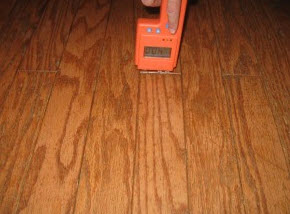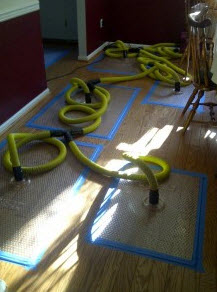
Recently we were called out to a water damage remediation for a homeowner in Cherry Hill, New Jersey.
The homeowner had just completed a remodel of the first floor of his home a few weeks ago.
And then,
his dishwasher supply line burst . . .
in the middle of the night . . .
while he was sleeping.
The homeowner woke up to an inch of water flowing out of his newly remodeled kitchen into the hallway and on into the dining room.

As you can imagine, he was very upset. Yes, he had homeowner’s insurance, and yes, his insurance agent assured him his loss was covered.
But he wanted to know if we could save his new floors since he and his wife had just installed them and loved them so much.
The short answer to the question by the homeowner “Can we save the floors?” is Yes!
But the longer, more accurate answer is . . . It depends

We were able to save the hardwood floors in this Cherry Hill home because it fit all the criteria:
1. First, the homeowner had installed hardwood floors – not laminate.
2. Second, the source of the water loss was a clean water source.
3. And third, the homeowner called us as soon as he discovered the loss, so we were able to extract the water and begin the drying process immediately.
However, we have been to many water remediation projects where the homeowners were not so lucky.
In some of these other cases, homeowners had installed laminate floors.
Unlike hardwood, laminate floors are usually installed to “float” over the sub-floor on top of a foam/film underlayment.

The two problems with this type of flooring are that laminate floors are made with glue that dissolves when it becomes soaked with water.
The other problem with laminate flooring is that the underlayment becomes soaked with water and is virtually impossible to dry.
Once it is soaked, it becomes a breeding ground for health-threatening mold growth.
So, the only option in this case is to tear out the floor and get it replaced.
In other situations, we have been called to do water damage remediation in homes with hardwood floors, but we were called too late to save the floors.
The floors had become cupped and warped and required total replacement. But more importantly, the water had dwelled so long that mold had begun to grow.
